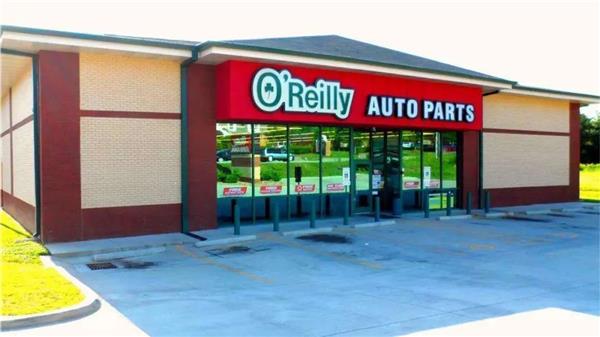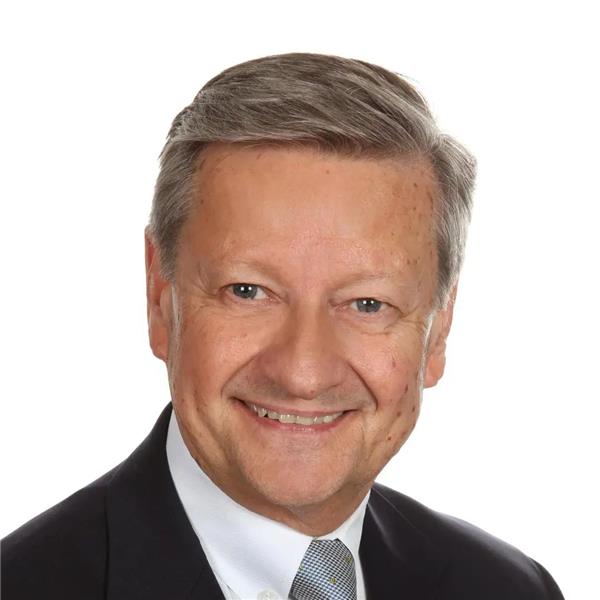当前位置:首页> 正文:比福特汽车还值钱!它是如何成为全球市值最高的汽配供应链公司的?
2020/10/19 10:46:07 David Barbeau 原创

纵观全球无数的企业,有一个唯一的共同目标,那就是获得增长。很少有企业主希望他的企业发展出现萎缩或停滞,唯有增长才能使企业自身变得更为强大,利润丰厚并且为投资者带来更多价值。
企业如何获得增长呢?通常有两种方式,一是通过自身的努力增开新的营业场所实现经营区域的不断扩大,或者增加产品及扩大服务品类,所有这些都是在现有企业实体中完成的;另一种则是通过并购其它企业来实现增长。通常所购买的企业和自身存在着相关性,属于同一行业,或者有着相同的商业模式。
有一家配件经销企业通过成功的并购实现了快速增长,我将和大家分享一下它的成功故事。
您可能熟悉这家公司:O’Reilly Auto Parts。它是一家大型上市公司,年收入约为100亿美元,截至本文撰写之日的股价为453美元/股(在2005年,该股曾被分为两部分,若将两部分合并,该股票的价格将为大约906美元/股)。首次公开募股(IPO)价格为17.50美元/股(上市以来增长了51倍多)。
O’Reilly的市值为339亿美元,为全球市值最高的汽配供应链企业,高于以下知名公司:
--AutoZone $26.4Billion USD (264亿美元)
--Ford Motor Co. $25.5Billion USD(255亿美元)
--GPC (NAPA) $13.6Billion USD(136亿美元)
这家公司是如何发展到如今的规模,为投资人带来如此大的价值呢?下面我们来看下它的发展历程。
01、O’Reilly的成功故事
1957年11月,O'Reilly Automotive正式开始在密苏里州斯普林菲尔德市经营汽车零部件业务。
到1961年,O’Reilly的所有经销商的销量总和达到了130万美元,公司于是成立了一个部门专门服务于当地市场的汽车配件零售商。1975年O’Reilly年销售额达到700万美元,同时建立了52000平方英尺的O’Reilly/Ozark仓储设施,支持9个配件店的运营,这9家门店全部位于密苏里州的西南部。
1993年O’Reilly公开上市,为公司后续的长期发展和稳定性增长奠定基础。自那时起,O’Reilly通过自身开店和频繁并购扩大规模,如今O’Reilly的门店已经遍布全美47个州,包括阿拉斯加和夏威夷。
在整个发展过程中,O’Reilly贯穿始终的企业精神和信念,是保驾其发展壮大的重要因素,并在每一次并购中都得到了传承。
O’Reilly发展过程中的重要节点
1、1978年,双业务模式策略诞生
O’Reilly制定了双业务模式策略,该策略旨在通过同时经营DIFA(B2B)和DIY(B2C)业务来争取销售的最大化。
2、1993年,O’Reilly成功上市
1992年底,O’Reilly家族决定把他们蓬勃发展的公司运作上市。1993年4月22日在纳斯达克市场首次公开发行2,333,333股普通股,股票代码为ORLY,每股定价17.50美元。
3、1998年,Hi/LO并购
1998年1月30日,O’Reilly进行了它成立至此的最大一次扩张,并购了Hi/LO Auto Supply。通过这次并购,它的规模扩大了接近一倍。此次被收购方总部位于德克萨斯州休斯顿,通过并购使O’Reilly在整个德克萨斯和路易斯安那增加了一个分销中心和182家门店。
4、2001,并购Mid-State
2001年10月并购Mid-State,O’Reilly的销售版图增加了5个州。这次并购使O’Reilly在阿拉巴马州、佛罗里达州、乔治亚州、印第安纳州和肯塔基州增添了82家门店,同时在田纳西州纳什维尔和田纳西州诺克斯维尔增添两个分销中心。至此,O’Reilly跻身全美前五汽配供应链企业行列。
5、2008,并购CSK
通过2008年7月11日收购CSK,O’Reilly雇员人数达到4万人,并在38个州拥有3200家门店。CSK旗下子公司包括Checker, Schuck’s, Kragen和Murray auto parts stores。分布在阿拉斯加、亚利桑那州、加利福尼亚州、科罗拉多州、夏威夷州、爱达荷州、密歇根州、内华达州、新墨西哥州、俄勒冈州、犹他州和华盛顿州的1342家门店,以及位于亚利桑那州凤凰城、密歇根州底特律、密西根州迪克森(现为加利福尼亚州斯托克顿)和明尼苏达州明尼阿波利斯的四个分销中心都归于O’Reilly旗下。
6、2012,并购VIP
2012年12月31日对VIP汽车配件的收购使O'Reilly进入了东北,足迹扩大至42个州。获得了在缅因州,新罕布什尔州和马萨诸塞州的56家商店,以及一个位于缅因州刘易斯顿(现在是马萨诸塞州德文斯)的分销中心。
7、2016,并购Bond
2016年12月2日,O'Reilly成立59周年,该公司收购了私营的东北部区域汽车零部件供应商Bond Auto Parts。收购了在四个州(佛蒙特州,新罕布什尔州,马萨诸塞州,纽约州)的48家门店,以及在佛蒙特州巴雷市的一个分销中心(最终与马萨诸塞州的德文斯合并)。至此O’Reilly在47个州经营配件业务。
8、2019年,O’Reilly进入国际市场,销售额到达100亿美元
2019年11月29日,O’Reilly收购了墨西哥公司Mayasa Auto Parts,完成了在美国以外的首次扩张。此次并购增加了1,100名员工,21家ORMA品牌的配件店,并通过6个配送中心为2,000多家零售商提供服务。
截至2019年12月31日,O’Reilly年度销售额到达101.5亿美元,完成一个新的里程碑。
回顾O’Reilly的发展历史,可以分为三个发展阶段:
从成立到1993年公开募股为止的子体系发展阶段。
通过并购的加速发展阶段。
基于2019年进入墨西哥后的国际市场拓展阶段。
02、实现成功并购的秘诀
那么,这么多并购能够成功的关键是什么?
一位业内专家的观点是,归功于O’Reilly强大的供应链能力。
构建供应链的要素包括:信息技术,物流,仓储管理,采购和配件目录。所有这些要素的设计和部署,都旨在保证配件门店每日的配件充足供应。也正是O’Reilly高度的配件供应满足率使它具备了竞争优势,而这一点对于DIFM和DIY业务都是至关重要的。
O’Reilly已经很好地部署了这些供应链元素,并且使他们成为其卓越运营能力的基础。
O’Reilly 收购了一些已经通过并购实现自身发展的公司。前文提到的CSK就是一个这类并购的例子。CSK收购了Big Wheel, AI’s and Murrays。然而这些公司的整合并非想象中的完美,甚至整合后对于CSK的整体业绩并无积极作用。O’Reilly收购CSK就是一个强并弱,同时把弱变强大的实例。
我曾询问过一个曾任职O’Reilly并购公司的高管朋友,什么是他认为O’Reilly这么多并购能够成功的关键,他表示:
“我认为他们能够成功是因为他们有一套可复制的方案,他们根本不去担心去整合系统或流程。他们要做的很简单,就是在合作伊始就部署他们自己的系统和流程,因为他们相信这套体系会起作用。他们并购企业是因为要填补他们未进入的空白市场,而大多数情况下,购买有一定基础的公司比重新开设一家要容易得多。”
从另外一个长期跟踪O’Reilly和其它后市场上市公司的投资公司分析师得到的观点,O’Reilly的成功还有另外一个要素——他们非常重视团队成员。O’Reilly为那些在配件领域成长发展起来的人才提供职业发展舞台。随着业务扩张,他们聘用最好的“配件专家”,这些人才的重要性,都已在他们为维修单位的技师及车主客户提供的卓越服务中得到体现。
03、要点总结
O’Reilly成功案例中与并购有关的关键要点:
有一只专门的团队来管理并购事宜。必须执行一套详尽的过渡和整合计划,才能将被收购的公司转移到久经考验的供应链体系中来。
除了经营企业的“硬性”要素外,还要强调“软性”领域。使被收购的组织融入收购者的文化非常重要。统一信念和行为可以提高团队成员的士气和绩效。
O’Reilly高度重视员工培训和发展。他们的员工在业内被公认为“配件专家”。另一位行业专家曾表示,O'Reilly内部提倡“节俭文化”,强调效率和消除浪费。
在并购过程中,将最高优先级放在为新客户群提供最佳配件满足率和客户服务上。协同节省应该是次要的,并且要放在确保新客户的忠诚度之后来考虑。

作者简介:
David Barbeau,巴博咨询(Barbeau Consulting)CEO,专注于汽车后市场40余年,曾负责德尔福和TI Automotive的全球售后业务,2010年创办巴博咨询,为中美汽车领域企业提供目标海外市场调研/情报、战略咨询、渠道对接服务,与中国汽车后市场有深厚的情结,也是AC汽车海外专家顾问。
欢迎沟通交流davidbarbeau31@gmail.com(英文),maggie.xu@aminsight.com.cn(中文)
以下为原文,供参考:
Successful Acquisitions
Keys to Success
Throughout the countless businesses around the world, there is an overwhelmingly common goal, growth. Seldom do business owners want to shrink, or plateau. Growth can make a business more powerful, more profitable, and increase its value for the owners.
So, how do businesses grow? There are two primary methods to grow; organically, or through an acquisition of another business. Organic growth is a process of expanding a business internally by adding new locations, new customers, or more products/services. All of this is done within the existing business entity.
A business can also grow by purchasing a related business; typically in the same industry with a similar business model.
There is an automotive parts distribution company that has grown successfully through acquisitions that I would like to bring to your attention.
You may be familiar with this company: O’Reilly Auto Parts. O’Reilly Auto Parts is a large publicly traded company with revenues of approximately $10billion USD and a share price as of the date of this article of $453USD—(there was a two for one stock split in 2005 which would make the stock at approximately $906USD). The initial public offering share price (IPO) was $17.50 USD.
O’Reilly has a market capitalization of $33.9BillionUSD. This is a value higher than the following well-known companies:
--AutoZone $26.4Billion USD (264亿美元)
--Ford Motor Co. $25.5Billion USD(255亿美元)
--GPC (NAPA) $13.6Billion USD(136亿美元)
So, how did this company become so large, successful and so valuable to its investors?
Let’s take a look at its history.
The O'Reilly Story
O'Reilly Automotive, Inc. officially started in the auto parts business in Springfield, Missouri, in November of 1957.
By 1961, the company's volume had reached $1.3 million – the combined volume of O'Reilly Automotive Distributors, a division formed to serve independent automotive jobbers in the area. In March of 1975, annual sales volume rose to $7 million, and a 52,000-square-foot facility was built for the O'Reilly/Ozark warehouse operation. By that time, the company had nine stores, all located in southwest Missouri.
The long-range plans and stability of the company were solidified by a public offering of company stock in April 1993. Since that time, the Company has grown through the opening of new stores, as well as through numerous mergers and acquisitions, and currently operates stores in 47 states, including Alaska and Hawaii.
Throughout this time the underlying spirit and philosophy of O'Reilly Automotive, Inc., has been one of growth and progress.
Company Milestones
1978 - Dual-Market Strategy is Born
O'Reilly develops the dual-market business strategy enabling the company to maximize sales both in the professional "do-it-for-me" business and in the retail "do-it-yourself" mar
1993 - O'Reilly Becomes a Publicly Traded Company
By late 1992, the O'Reilly family decides to take their thriving company public. The initial public offering, April 22, 1993, of 2,333,332 shares of common stock on the NASDAQ market under the symbol ORLY was $17.50 per share.
1998 - Hi/LO Acquisition
January 30, 1998, O'Reilly undertakes the largest expansion in its history at the time, with the acquisition of Hi/LO Auto Supply, nearly doubling in size. Headquartered in Houston, TX, the acquisition added a distribution center there and 182 stores across Texas and Louisiana.
2001 - Mid-State Acquisition
The O'Reilly sales footprint grew by five states with the Mid-State acquisition in the fall (October 1) of 2001. This gave the company an additional 82 stores in five states: Alabama, Florida, Georgia, Indiana, and Kentucky, and two distribution centers in Nashville, TN and Knoxville, TN. With the growth, O'Reilly advanced into the ranks of the top five auto parts chains in the nation.
2008 - CSK Acquisition
The July 11 CSK acquisition brings O'Reilly to 40,000 team members and 3,200 stores in 38 states. CSK is the parent company of Checker, Schuck’s, Kragen and Murray auto parts stores. Acquired were: 1,342 stores in 12 states: Alaska, Arizona, California, Colorado, Hawaii, Idaho, Michigan, Nevada, New Mexico, Oregon, Utah, and Washington; and four DCs in Phoenix, AZ, Detroit, MI, Dixon, CA (now Stockton, CA) and Minneapolis, MN.
2012 - VIP Acquisition
The December 31 acquisition of VIP Auto Parts moves O'Reilly into the Northeast and 42 states. Acquired were: 56 stores in three states: Maine, New Hampshire, and Massachusetts; and one DC in Lewiston, ME (now Devens, MA).
2016 - Bond Acquisition
On December 2, O'Reilly's 59th Anniversary, the company acquired the privately held Northeast automotive parts supplier Bond Auto Parts. Acquired were 48 stores in four states (Vermont, New Hampshire, Massachusetts, New York), plus one distribution center in Barre, VT (eventually to combine with Devens, MA.) O'Reilly was now in 47 states!
2019 – O’Reilly Goes International and Sales Reach $10 Billion
On Nov. 29, the Company completed its first expansion outside the U.S. with the acquisition of Mexico-based company, Mayasa Auto Parts. The partnership added 1,100 team members, 21 ORMA branded parts stores, and more than 2,000 jobbers serviced through six distribution centers.
In addition, sales for the year ended Dec. 31, reached a milestone of $10.15 billion.
One can look at O’Reilly’s history and point to three phases of growth:
--Organic growth from its inception until it went public in 1993.
--Growth accelerated by important acquisitions detailed above
--Growth from geographic expansion into Mexico in 2019
Keys of Successful Acquisitions
So, what has been the key to success with all of these acquisitions? In the opinion of certain industry experts, it is an excellent supply chain. Supply chain components include: Information technology, logistics, warehouse management systems, sourcing, cataloging. All of these components are designed to enable daily parts replacements to its stores. This powerful parts availability gives O’Reilly a competitive advantage. Availability of parts is what is most important to do it for me customers (DIFM) and do it yourself customers (DIY).
O’Reilly has developed these elements of their supply chain and they have served as the foundation for their operational excellence.
O’Reilly has acquired companies, who themselves have grown in size through acquisition. An example is the aforementioned CSK acquisition. CSK acquired Big Wheel, Al’s, and Murrays. However these companies were not flawlessly integrated and the acquisitions were not accretive to the overall CSK results. O’Reilly’s acquisition of CSK was an example of “strong” buying the “weak” and then making the “weak” stronger.
I asked a Senior Executive of another company that O’Reilly acquired and this is what he had to say about their success with acquisitions.
“I think they do well because they have a repeatable plan. They don’t worry about merging systems or programs they simply begin implementing their system and programs immediately because they have confidence it will work. I think they buy businesses because they simply want to the geography in question and it is easier to start with a base of business than just Greenfield in most cases.”
From an analyst in an investment firm which follows O’Reilly and other publicly traded aftermarket companies, there is another area that has fueled O’Reilly success. They place a high value in their team members. O’Reilly develops people who have grown up in the parts business. As they expand, they hire the best “Parts Pros” who have demonstrated their importance by providing excellent service to technicians at workshops and to DIYers.
Takeaways
Some key takeaways from this O’Reilly success story as it relates to acquisitions:
--Have a dedicated team to manage acquisitions. A detailed transition and integration plan must be executed to move the acquired company to the tried and proven supply chain elements.
--In addition to the “hard” elements of running a business, place emphasis on the “soft” areas. Moving the acquired organization into the acquirer’s culture is very important. Unifying beliefs and behaviors can enhance team members’ morale and performance.
--O’Reilly places high priority on employee training and development. Their store employees are known in the industry as “parts pros”. Another industry expert has stated that O’Reilly creates a “culture of thrift”; an emphasis on efficiency and elimination of waste.
--In the acquisition process, place the highest priority on providing the best inventory availability and customer service to the new customer base. Synergistic savings should be secondary and will come about after securing new customers’ loyalty.
各种跨界者加入战局,导致客户购买和安装轮胎的方式迎来变化。传统维修...
小桔车服召开安全管理委员会专项会议,会议任命小桔租车、小桔养车、小...
从预约检测到透明报价、从专业技师到纯正配件,从免费车辆电子健康检测...
哪些汽服门店在换门头?换门头的原因是什么?